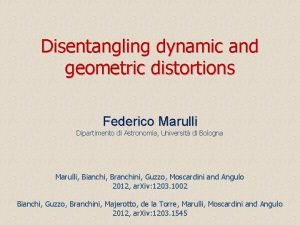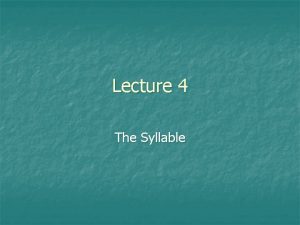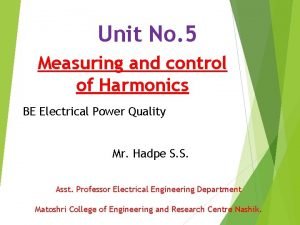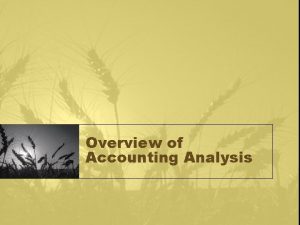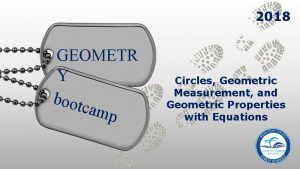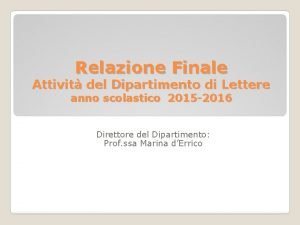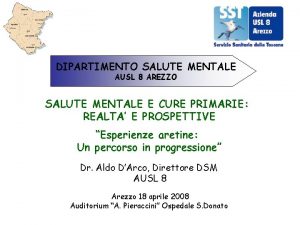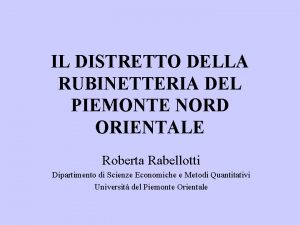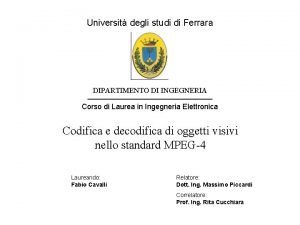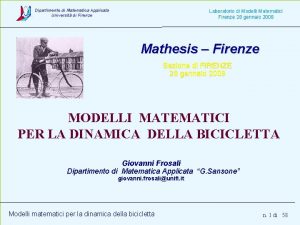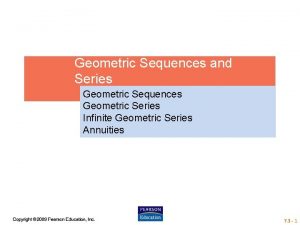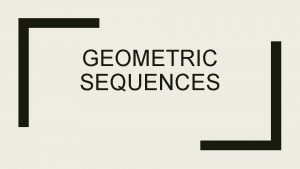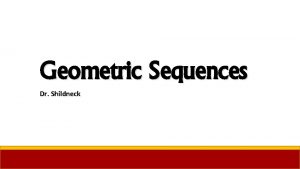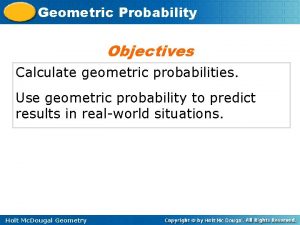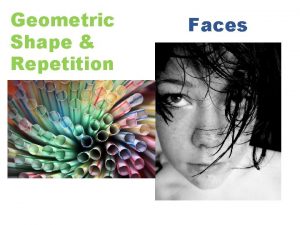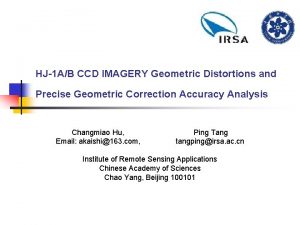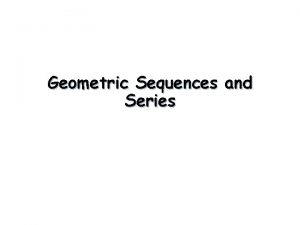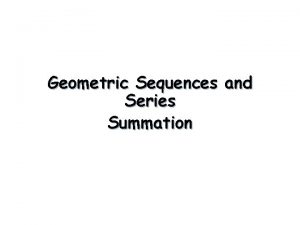Disentangling dynamic and geometric distortions Federico Marulli Dipartimento













![Errors on β on different mass ranges • Small masses [M<5 e 12 Msun/h] Errors on β on different mass ranges • Small masses [M<5 e 12 Msun/h]](https://slidetodoc.com/presentation_image/289bbbccc5cf7b41bdf7e6147005b15d/image-14.jpg)




- Slides: 18

Disentangling dynamic and geometric distortions Federico Marulli Dipartimento di Astronomia, Università di Bologna Marulli, Bianchi, Branchini, Guzzo, Moscardini and Angulo 2012, ar. Xiv: 1203. 1002 Bianchi, Guzzo, Branchini, Majerotto, de la Torre, Marulli, Moscardini and Angulo 2012, ar. Xiv: 1203. 1545

Bologna cosmology/clustering group Carmelita Carbone: N-body with DE and neutrinos + forecasts Victor Vera (Ph. D): BAO with new statistics Fernanda Petracca (Ph. D): DE and neutrino constraints from ξ(rp, π) Carlo Giocoli: HOD and HAM (Halo Abundance Matching) Roberto Gilli: AGN clustering Michele Moresco: P(k) Lauro Moscardini: clustering of galaxy clusters Andrea Cimatti: galaxy/AGN evolution Federico Marulli: RSD + Alcock-Paczynski test + clustering of galaxies/AGN

Redshift space distortions How to constract a 3 D map Ra, Dec, Redshift comoving coordinates the real comoving distance is: Dynamic distortions the observed galaxy redshift: Geometric distortions Observational distortions zc : cosmological redshift due to the Hubble flow v||: component of the galaxy peculiar velocity parallel to the line-of-sight

Dynamic and geometric distortions The two-point correlation function geometric distortions dynamic+geometric distortions no distortions dynamic distortions geometric distortions dynamic+geometric distortions

Modelling the dynamical distortions The “dispersion” model linear model non-linear model parameters

δβ/β Statistical errors on the growth rate bias density Bianchi et al. 2012

Effect of redshift errors on β and σ12 Only dynamic distortions Dynamic distortions + δz δz small sistematic error on β δβ ~ 5% for all δz

Effect of geometric distortions Error on the bias Spurious scale dependence in b(r) Error on β Error on ξ(s)/ξ(r) GD δβ is negligible

The Alcock-Paczynski test Steps of the method 1. Choose a cosmological model to convert redshifts into comoving coordinates 2. Measure ξ 3. Model only the dynamical distortions 4. Go back to 1. using a different test cosmology

…next future 10 N-body simulations with massive neutrinos (L=2 Gpc/h) (1 e 6 CPU hours at CINECA) for: Ø all-sky mock galaxy catalogues via HOD and box-stacking Ø all-sky shear maps via box-stacking and ray-tracing Ø all-sky CMB weak-lensing maps Ø end-to-end simulations for BAO and RSD statistics Ø reference skies for future galaxy/shear/CMB-lensing probes Ø ISW/Rees-Sciama implementation/analysis PI Carmelita Carbone

Conclusions • systematic error on β of up to 10%, for small bias objects • small systematic errors for haloes with more than ~1 e 13 Msun • scaling formula for the relative error on β as a function of survey parameters • the impact of redshift errors on RSD is similar to that of small-scale velocity dispersion • large redshift errors (σv >1000 km/s) introduce a systematic error on β, that can be accounted for by modelling f(v) with a gaussian form • the impact of GD is negligible on the estimate of β • GD introduce a spurious scale dependence in the bias • AP test joint constraints on β and ΩM

Mock halo catalogues BASICC simulation by Raul Angulo GADGET-2 code • ~1448^3 DM particles with mass 5. 49 e 10 Msun/h • periodic box of 1340 Mpc/h on a side • ΛCDM “concordance” cosmological framework (Ωm=0. 25, Ωb=0. 045, ΩΛ=0. 75, h=0. 73, n=1, σ8=0. 9) • DM haloes: FOF M>1 e 12 Msun/h • Z=1

Systematic errors on the growth rate ~10%
![Errors on β on different mass ranges Small masses M5 e 12 Msunh Errors on β on different mass ranges • Small masses [M<5 e 12 Msun/h]](https://slidetodoc.com/presentation_image/289bbbccc5cf7b41bdf7e6147005b15d/image-14.jpg)
Errors on β on different mass ranges • Small masses [M<5 e 12 Msun/h] systematic error on β ~ 10% • Intermediate masses [5 e 12<M<2 e 13 Msun/h] systematic error is small the linear model works accurately • Large masses [M>2 e 13 Msun/h] large random errors

Statistical errors vs Volume

Effect of redshift errors on β and σ12

Effect of geometric distortions 1 D correlation function deprojected correlation

Effect of redshift errors on 1 D ξ
 Federico marulli
Federico marulli Trade distortions and marketing barriers
Trade distortions and marketing barriers Vowel distortions
Vowel distortions Ruth benjamin
Ruth benjamin The devices for controlling harmonic distortions are
The devices for controlling harmonic distortions are Undo accounting distortions
Undo accounting distortions Circles geometric measurement and geometric properties
Circles geometric measurement and geometric properties Dynamic dynamic - bloom
Dynamic dynamic - bloom Dipartimento di chimica pavia
Dipartimento di chimica pavia Relazione finale referente dipartimento
Relazione finale referente dipartimento Centro salute mentale arezzo
Centro salute mentale arezzo Dipartimento casa italia
Dipartimento casa italia Sociologia scuola di chicago
Sociologia scuola di chicago Nord (dipartimento)
Nord (dipartimento) Dipartimento prevenzione asl viterbo
Dipartimento prevenzione asl viterbo Unipr dipartimento economia
Unipr dipartimento economia Dipartimento ingegneria ferrara
Dipartimento ingegneria ferrara Totalmente compensatorio
Totalmente compensatorio Dipartimento di matematica firenze
Dipartimento di matematica firenze
